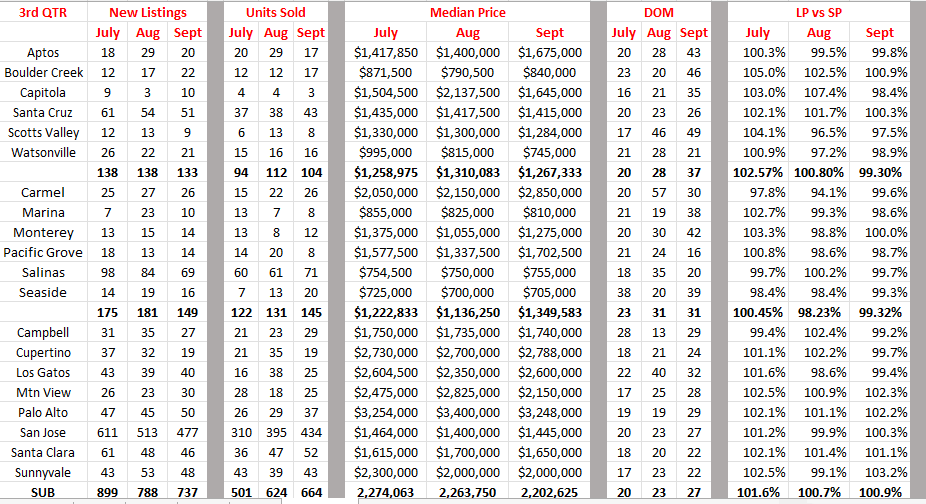October 2022
American confidence rises to the highest level in 6 months
Americans' confidence rose to the highest level in six months in September according to statistics from the National Association of Realtors, and their spending remained steady despite higher prices. Wage growth, however, is not keeping pace with inflation and thus consumers are increasingly relying on their savings to offset the higher cost of living. As households' savings dwindle while higher interest rates push up credit card debt, consumer confidence could dip in coming months as economic activity slows. As for the housing market, higher mortgage rates continue to worsen affordability and remain the major factor that holds back demand. Despite a slight improvement in sales in August, home buying activity is expected to be sluggish in the months ahead as rates remain high.
Remote work drove over 60% of house-price surge
The shift to working from home drove more than half of the increase in house and rent prices during the pandemic and will likely drive-up costs and inflation going forward as the shift becomes permanent, according to research from the Federal Reserve Bank of San Francisco.
"The transition to remote work because of the COVID-19 pandemic has been a key driver of the recent surge in housing prices," economists reported.
House prices rose 24% in the two years ended November 2021. More than 60% of that increase is attributable to the rise in work from home during the pandemic - a trend that has persisted, with 30% of work still being done from home as of last month.
This suggests that the fundamentals of housing demand have changed, such that the persistence of remote work is likely to affect the future path of real estate prices and inflation. The authors, who adjusted housing data to account for the migration from expensive cities to more affordable areas that occurred during the pandemic, found that each 1 percentage point increase in remote work results in about a 0.9 percentage point increase in house prices. The impact on rent prices has been identical.
Panetta introduces bill to raise the capital gain exclusion
In the House of Representatives Monday, Jimmy Panetta (D-CA) and Mike Kelley (R-CA) introduced a bill named "More Homes on the Market Act" that would increase the capital gain exclusion amounts on the sale of a principal residence to $500,000 for single filers and $1 million for joint filers and indexes the ecexclusion for inflation.
California REALTORS thank Congressman Panetta for introducing this bill which would provide the necessary tax relief for California homeowners, particularly senior citizens, who have been unable to move because of the onerous tax burden that could result if they were to sell.
For working Californians, a home is their biggest and most important investment. However, because the capital gains exclusion was passed 25 years ago with no indexing for inflation, many families have been able to downsize and access the equity built up in their homes. This has resulted in fewer homes being available for younger and first-time homebuyers to more into, which has driven up demand and home prices even more.
Fair housing history and CA Proposition 14
Although omitted from history books for years, details about systemic, policy-based discrimination in real estate sales, financing and valuation have reached new audiences recently.
California was one of the first states to ban housing discrimination. In 1963, the Rumford Fair Housing Act was signed into law by Governor Pat Brown after years of opposition in the state senate. California voters then approved the constitutional amendment.
With the state no longer able to guarantee that developments would be free of discrimination, the federal government immediately froze funding for California urban renewal projects impacting proposed developments across the state.
Though high courts invalidate Proposition 14, and the Fair Housing Act of 1968 would soon outlaw discrimination based on race, religion, national origin, and sex.
REALTORS have proudly stood against housing discrimination, holding themselves to a higher professional standard on non-discrimination. The hope is that understanding the customs and policies at the root of homeownership inequality will help to develop and support policies and practices that will drastically reduce it, as we all work to increase homeownership opportunities for all Californians.
3rd Quarter Comparisons for Santa Cruz, Monterey & the Bay Area
Comments: What we knew was coming is here. New listings relatively steady month over month in Santa Cruz, in Monterey down 17% in Sept over Aug and 15% since July and in Santa Clara down 6% in Sept from August and 18% since July. This may be driven by higher interest rates or the list to sale price ratio declining by over 1.5% in Santa Cruz and declining in Santa Clara. Median price always fluctuates depending on what is listed or sold and when, although did decline in Santa Cruz and Santa Clara. Days on the Market increased considerably in Santa Cruz, stayed the same after an increase in August in Monterey, and up each month in Santa Clara County. (Display of MLS data is deemed reliable but is not guaranteed accurate by the MLS)


